Invitrogen
CD144 (VE-cadherin) Monoclonal Antibody (eBioBV13 (BV13)), PerCP-eFluor™ 710, eBioscience™
FIGURE: 1 / 22
CD144 (VE-cadherin) Antibody (46-1441-82) in Flow
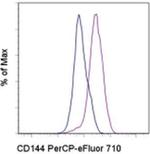
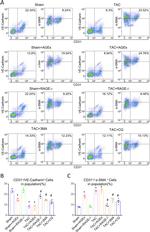
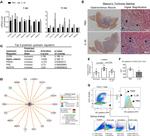
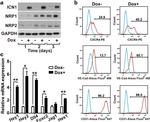
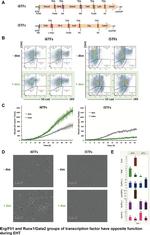

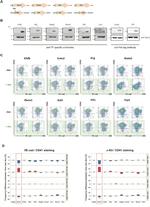

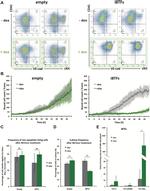
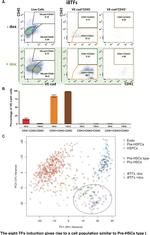
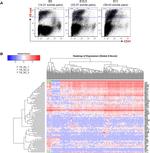
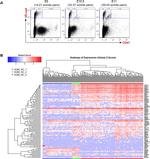

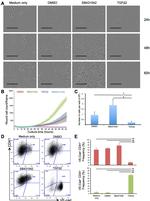
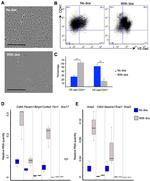
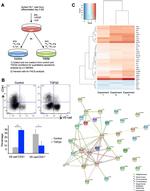

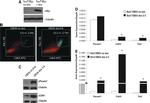
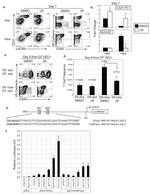

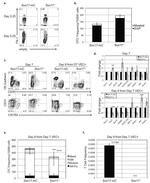
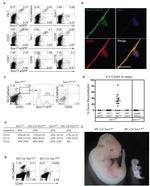
Product Details
46-1441-82
Species Reactivity
Published species
Host/Isotype
Recommended Isotype Control
Class
Type
Clone
Conjugate
Excitation/Emission Max
Form
Concentration
Purification
Storage buffer
Contains
Storage conditions
Shipping conditions
RRID
Product Specific Information
Description: The BV13 monoclonal antibody reacts with mouse VE-Cadherin (CD144). VE-Cadherin is a 120 kDa member of the type II Cadherin family, characterized by the presence of 5 extracellular cadherin domains (ECD), and anchored to the actin cytoskeleton through their cytoplasmic tail. VE-Cadherin mediates homophilic adhesion between neighbouring endothelial cells and is localized within specialized structures at cell-cell contacts, called adherens junctions. VE-Cadherin is expressed constitutively throughout the entire vasculature, and is required for numerous endothelial cell functions including migration, survival, contact-dependent growth inhibition and endothelial cell assembly into tubular structures. Furthermore, it is thought that VE-Cadherin+CD45- cells from the yolk sac or aorta-gonad-mesonephros (AGM) have the potential to give rise to hematopoietic cells.
Applications Reported: This eBioBV13 (BV13) antibody has been reported for use in flow cytometric analysis.
Applications Tested: This eBioBV13 (BV13) antibody has been tested by flow cytometric analysis of bEnd.3 cells. This can be used at less than or equal to 0.5 µg per test. A test is defined as the amount (µg) of antibody that will stain a cell sample in a final volume of 100 µL. Cell number should be determined empirically but can range from 10^5 to 10^8 cells/test. It is recommended that the antibody be carefully titrated for optimal performance in the assay of interest.
PerCP-eFluor® 710 emits at 710 nm and is excited with the blue laser (488 nm); it can be used in place of PerCP-Cyanine5.5. We recommend using a 710/50 bandpass filter, however, the 695/40 bandpass filter is an acceptable alternative. Please make sure that your instrument is capable of detecting this fluorochrome.
Fixation: Samples can be stored in IC Fixation Buffer (Product # 00-822-49) (100 µL cell sample + 100 µL IC Fixation Buffer) or 1-step Fix/Lyse Solution (Product # 00-5333-54) for up to 3 days in the dark at 4°C with minimal impact on brightness and FRET efficiency/compensation. Some generalizations regarding fluorophore performance after fixation can be made, but clone specific performance should be determined empirically.
Excitation: 488 nm; Emission: 710 nm; Laser: Blue Laser.
Filtration: 0.2 µm post-manufacturing filtered.
Target Information
VE-cadherin is a member of the cadherin superfamily that is located in a six-cadherin cluster in a region on the long arm of chromosome 16 and is involved in loss of heterozygosity events in breast and prostate cancer. VE-cadherin protein is a calcium-dependent cell-cell adhesion glycoprotein comprised of five extracellular cadherin repeats, a transmembrane region and a highly conserved cytoplasmic tail. Functioning as a classic cadherin by imparting to cells the ability to adhere in a homophilic manner, VE-cadherin may play an important role in endothelial cell biology through control of the cohesion and organization of the intercellular junctions. An alternative splice variant has been described but the full length sequence of VE-cadherin has not been determined.
For Research Use Only. Not for use in diagnostic procedures. Not for resale without express authorization.
How to use the Panel Builder
Watch the video to learn how to use the Invitrogen Flow Cytometry Panel Builder to build your next flow cytometry panel in 5 easy steps.
Bioinformatics
Protein Aliases: 7B4/cadherin-5; Cadherin-5; CD144; Vascular endothelial cadherin; VE-cadherin
Gene Aliases: 7B4; AA408225; Cd144; Cdh5; VE-Cad; Vec; VEcad; VECD
UniProt ID: (Mouse) P55284
Entrez Gene ID: (Mouse) 12562

Performance Guarantee
If an Invitrogen™ antibody doesn't perform as described on our website or datasheet,we'll replace the product at no cost to you, or provide you with a credit for a future purchase.*
Learn more
We're here to help
Get expert recommendations for common problems or connect directly with an on staff expert for technical assistance related to applications, equipment and general product use.
Contact tech support

